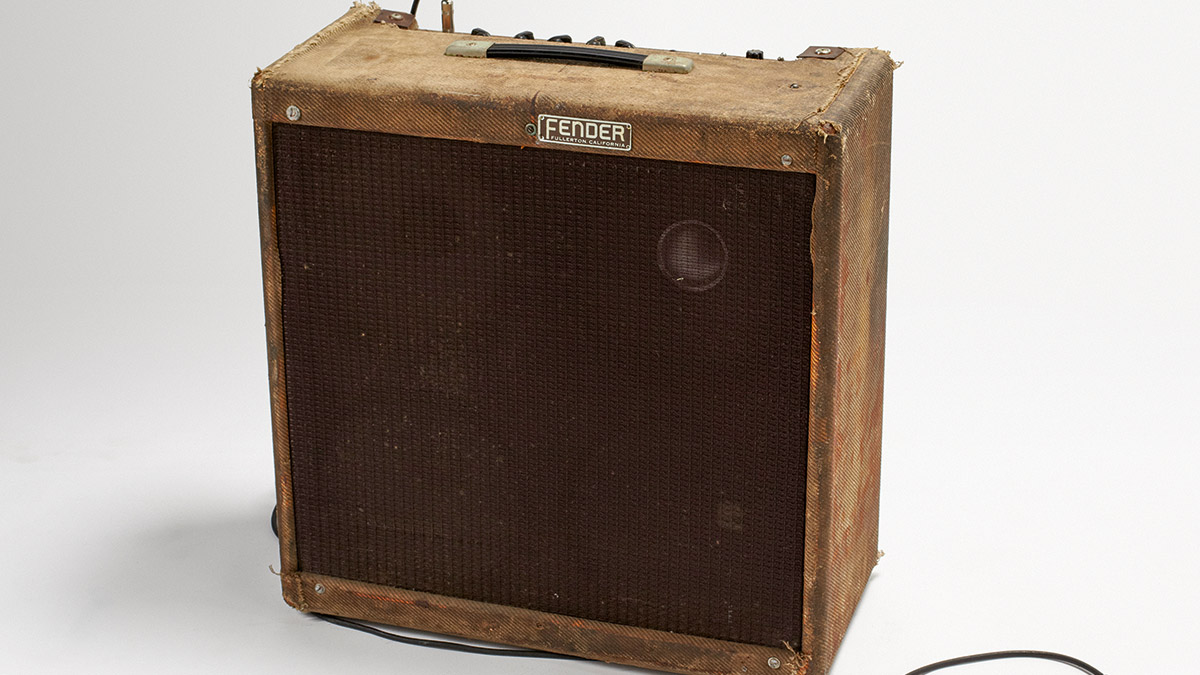The history of the Fender ‘Tweed’ Bassman – the tube amp for bass players that became a guitar classic
How the 1950s Bassman combo designs laid the groundwork for countless guitar amps

As its name implies, the Fender Bassman was designed with the electric bass guitar in mind – specifically, the Precision Bass – though it has been wholeheartedly adopted by guitarists. Indeed, Fender’s current ’59 Bassman LTD amp is aimed at the six-string market, featuring in the ‘Guitar Amplifiers’ section of its website.
This 45-watt reissue-style amp harks back to the game-changing 5F6-A circuit (one of many versions the Bassman has appeared in since its 1952 introduction) that was the basis of Marshall’s 1962 debut JTM45 amps.
Although these designs are extremely similar in terms of electronics, Marshall’s 12-inch Celestion-loaded, closed-back speaker cabinets create a markedly different sound to the quad of 10-inch Jensens found in 1950s open-back Bassman combos. But the Bassman’s set of Jensen P10R speakers (superseded by the P10Q in 1959) is a far cry from its original single 15-inch Jensen format.
Soon after the groundbreaking Precision Bass appeared in 1951, Fender developed its partner amplifier. Initially, the 18-watt 1x15 Pro-Amp was the most powerful amp in the line able to be called upon for bass duties, but the Bassman appeared the following year with an original design that included a bass-friendly ported back panel and 26 watts of power.

Sporting a single channel with two inputs along with volume and tone controls, this 5B6 circuit Bassman was originally decked out in the ‘TV front’ style of tweed amps and changed to the ‘wide panel’ style in ’53. In both instances, the chassis was mounted to the bottom of the cabinet, attached to the top-mounted control panel by an ‘umbilical cord’ of wire.
In late 1954, Fender redesigned the Bassman and introduced some major improvements with the ‘narrow panel’ 5D6 version. This ushered in not only the 4x10 layout but also a fixed bias output stage – meaning greater headroom and a clearer-sounding bottom-end – and dual rectification, courtesy of a pair of 5Y3GT rectifier valves.
Early the following year, the 5E6 version appeared sporting dual 5U4GA rectifier valves. These twin-channel (Normal and Bright) amps feature an extended control array comprising knobs labelled ‘Presence’, ‘Bass’, ‘Treble’, ‘Volume-1’ and ‘Volume-2’.
Get The Pick Newsletter
All the latest guitar news, interviews, lessons, reviews, deals and more, direct to your inbox!
By this stage, Fender openly recognised the Bassman’s appeal to guitar players, as the 1955 catalogue attests: “Provides true bass amplification or may also be used for other instruments due to its widely varying tonal character.” (It’s worth noting the same catalogue entry advertises the Bassman as having “50 watts” of power, although various sources, including Fender, quote the power rating as 40 and 45 watts).
In 1957, the 5F6 Bassman version heralded the arrival of yet another significant development in guitar-amplifier design with the long-tailed-pair phase inverter, further enhancing the amp’s power, depth and clarity. At the same time, a Middle tone knob was added to the control panel along with two inputs per channel.
Meanwhile, a single 83 rectifier valve was installed, and the long-standing 6L6 power valves were superseded by dual 5881s. Featuring a GZ34 rectifier valve, the highly influential 5F6-A circuit appeared in 1958, representing what many people consider to be the zenith of the tweed-era Fender Bassman.
The Evolution of the Fender ‘Tweed’ Bassman
- 1952: Fender Bassman released; 5B6 version; tweed covering; ‘TV front’; 26 watts; 1x15; single channel
- 1953: ‘Wide panel’ cabinet
- 1954: 5D6 version; ‘narrow panel’ cabinet; “50 watts” (advertised); 4x10; dual channel (Normal and Bright)
- 1955: 5E6 version; 5U4GA rectifier valves
- 1957: 5F6 version; 4x inputs (2 per channel); Middle added to Treble and Bass controls; 83 rectifier valve
- 1958: 5F6-A version; GZ34 rectifier valve
- 1959: Rubber ‘dog bone’ handle replaces leather type
- 1960: Discontinued
- 1990: Reissue Series ’59 Bassman
- Current: ’59 Bassman LTD
Rod Brakes is a music journalist with an expertise in guitars. Having spent many years at the coalface as a guitar dealer and tech, Rod's more recent work as a writer covering artists, industry pros and gear includes contributions for leading publications and websites such as Guitarist, Total Guitar, Guitar World, Guitar Player and MusicRadar in addition to specialist music books, blogs and social media. He is also a lifelong musician.












